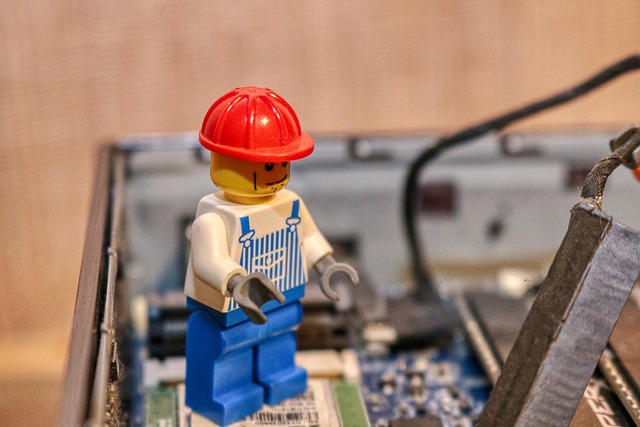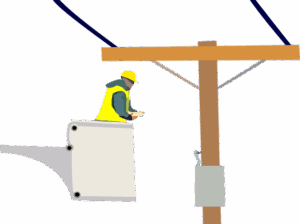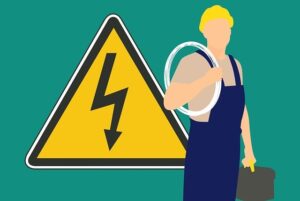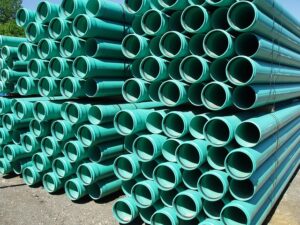Precision in Comfort: Calibrating HVAC Sensors for Accurate Climate Control
HVAC systems rely on precise sensors and controls to maintain comfortable indoor temperatures, humidity levels, and air quality. Regular calibration of these components by HVAC repair professionals is essential for accurate environmental readings and efficient system operati…….

HVAC systems rely on precise sensors and controls to maintain comfortable indoor temperatures, humidity levels, and air quality. Regular calibration of these components by HVAC repair professionals is essential for accurate environmental readings and efficient system operation, which in turn saves energy and reduces utility costs. Over time, without maintenance, sensors can become inaccurate, leading to increased energy consumption and potential discomfort or health issues. Professional calibration ensures that the HVAC system responds correctly to environmental changes, prolonging its lifespan and maintaining its designed performance. It's important to address any sensor malfunctions promptly to prevent inefficiencies and costly repairs later on. In summary, consistent HVAC repair and maintenance, particularly sensor calibration, are critical for the health, comfort, and energy efficiency of any building.
Ensuring the precision of your HVAC system is pivotal for maintaining a comfortable and energy-efficient environment. This article delves into the intricacies of HVAC sensors and controls, emphasizing their critical role in climate management. We will explore the necessity of calibration for these components to provide accurate readings, which in turn influences both comfort and efficiency. From understanding the types of sensors commonly employed within HVAC systems to identifying when a sensor may require repair or adjustment, this guide offers a comprehensive approach to maintaining your system’s performance. Additionally, we will discuss the latest advancements in HVAC sensor technology, providing insights into future innovations that promise even greater accuracy and reliability. Whether you’re a homeowner concerned about HVAC repair costs or a professional seeking to expand your knowledge on the subject, this article serves as an authoritative resource for ensuring your HVAC system operates at peak efficiency.
- Understanding HVAC Sensors and Controls: A Necessary Overview
- The Role of Calibration in Ensuring Accurate HVAC Readings
- Types of HVAC Sensors Commonly Used in HVAC Systems
- Identifying the Need for HVAC Sensor Repair or Calibration
Understanding HVAC Sensors and Controls: A Necessary Overview

When it comes to maintaining optimal comfort and energy efficiency in residential or commercial buildings, understanding HVAC sensors and controls is paramount. These components are integral to the HVAC system’s performance, ensuring that heating, ventilation, and air conditioning units operate at peak efficiency. HVAC repair professionals often emphasize the importance of accurately calibrated sensors and controls for maintaining a comfortable environment while also extending the lifespan of the equipment.
Sensors within an HVAC system measure critical environmental parameters such as temperature, humidity, pressure, and airflow. They send this data to the system’s controls, which use this information to make real-time decisions about when to turn on or off, adjust temperatures, and optimize performance. For instance, a temperature sensor will signal the thermostat to activate the heating or cooling system when ambient conditions deviate from the set points. Similarly, humidity sensors can control dehumidifiers or humidifiers to maintain an ideal level of moisture in the air. The precision of these sensors directly affects the comfort levels and energy usage within a space. Therefore, regular checks and calibrations by HVAC repair experts are essential to ensure that these sensors and controls function correctly, providing accurate readings that lead to efficient operation and reduced costs associated with inefficiency or unnecessary repairs.
The Role of Calibration in Ensuring Accurate HVAC Readings

Regular calibration of HVAC sensors and controls is a cornerstone in maintaining the efficiency and accuracy of heating, ventilation, and air conditioning systems. As HVAC systems are tasked with regulating the temperature, humidity, and air quality within buildings, their performance hinges on the precision of these components. Calibration ensures that the sensors accurately detect environmental conditions, which in turn allows the controls to make precise adjustments to maintain optimal comfort levels for occupants. Over time, without proper calibration, sensors can drift from their true readings due to various factors such as temperature fluctuations, dust accumulation, and sensor aging. This drift can lead to improper functioning of the HVAC system, resulting in energy waste and potential discomfort or health issues for those using the space. Therefore, routine HVAC repair services that include calibration are essential for preventing these issues and ensuring that the system operates within its design specifications, providing reliable and consistent readings. By adhering to a regular maintenance schedule that includes sensor calibration, building owners and facility managers can extend the lifespan of their HVAC systems, reduce repair costs, and maintain a safe and comfortable indoor environment for occupants. This attention to detail in calibration is not just a preventive measure but also a critical aspect of HVAC repair and maintenance that contributes to the overall efficiency and longevity of the system.
Types of HVAC Sensors Commonly Used in HVAC Systems

HVAC systems rely on a network of sensors and controls to maintain optimal indoor temperatures, ensure air quality, and regulate humidity levels. Among the types of HVAC sensors commonly used in these systems are thermostats, which initiate heating or cooling cycles based on temperature readings; hygrometers, which measure humidity levels; and barometers, which track atmospheric pressure changes that can affect air density and heating/cooling efficiency. Anemometers may also be present to monitor airflow within ducts, ensuring even distribution of conditioned air. In addition to these, HVAC systems utilize various types of gas sensors to detect harmful gases like carbon monoxide or natural gas leaks, which are critical for maintaining safe indoor air quality and can often necessitate HVAC repair services when faulty sensors or controls lead to malfunctions.
For accurate readings and efficient operation, these sensors must be calibrated regularly. Calibration ensures that each sensor is providing precise data, which is then used by the system’s controls to make adjustments. For instance, a poorly calibrated thermostat could result in unnecessary energy consumption or discomfort for occupants due to inaccurate temperature readings. Similarly, a hygrometer that is out of calibration could lead to excessive humidity or dry air conditions, both of which can affect health and comfort. The role of HVAC repair professionals includes not only fixing breakdowns but also ensuring that sensors are functioning correctly and that their readings align with the actual environmental conditions. This is paramount for the longevity of the HVAC system and the well-being of those who use it, making the calibration and maintenance of HVAC sensors a key component of overall system health.
Identifying the Need for HVAC Sensor Repair or Calibration

When it comes to maintaining optimal environmental conditions within commercial and residential spaces, the accuracy of HVAC sensors and controls is paramount. These components play a critical role in ensuring that heating, ventilation, and air conditioning systems perform effectively, providing comfortable and energy-efficient climates for occupants. Over time, however, sensors can drift from their calibrated settings due to factors such as physical disturbances, environmental changes, or simply through the natural wear and tear of operation. This sensor misalignment can lead to inaccurate temperature readings, which in turn may cause HVAC systems to operate less efficiently, leading to increased energy costs and a potential reduction in comfort levels. Recognizing the signs that indicate a need for HVAC sensor repair or calibration is essential for maintaining system integrity and performance. Common indicators include noticeable fluctuations in temperature readings, longer than usual run times of the HVAC system, and unexpected high energy bills. Regular maintenance checks by qualified HVAC technicians can detect these issues early on, ensuring that any necessary sensor repair or calibration is carried out promptly to restore optimal system function. In the event of identified discrepancies, a professional HVAC repair service should be enlisted to perform precise calibrations, thereby safeguarding the longevity and reliability of both the sensors and the overall HVAC system.
In concluding, the meticulous testing and calibration of HVAC sensors and controls are pivotal for maintaining optimal environmental conditions within residential and commercial spaces. The overview of HVAC systems’ inner workings underscores the importance of understanding how sensors and controls function to ensure comfort and energy efficiency. Calibration emerges as a critical practice in this domain, as it guarantees accurate readings that directly impact the effectiveness of heating, ventilation, and air conditioning systems. When HVAC sensors are out of sync, they can lead to unnecessary energy consumption and discomfort for occupants. Regular calibration not only rectifies this but also extends the lifespan of the equipment by preventing overworking due to inaccurate data. For homeowners and facility managers alike, recognizing when HVAC sensor repair or calibration is necessary is a key aspect of maintaining operational excellence and avoiding costly repairs down the line. By prioritizing the precision of these components, we can enhance indoor air quality, sustain comfort levels, and reduce energy costs, making the investment in HVAC repair services a strategic choice for any property manager looking to optimize their system’s performance.







